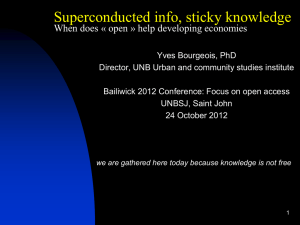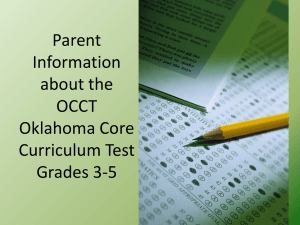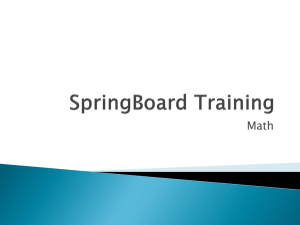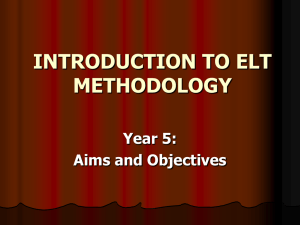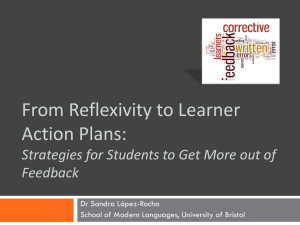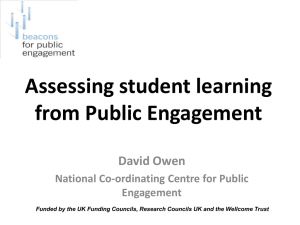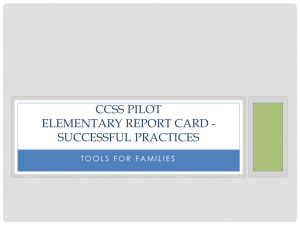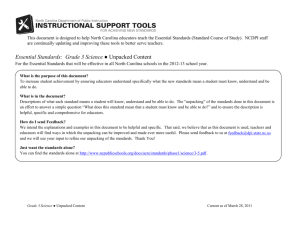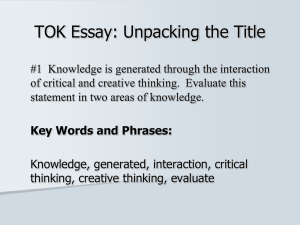Unpacking GPS Standards
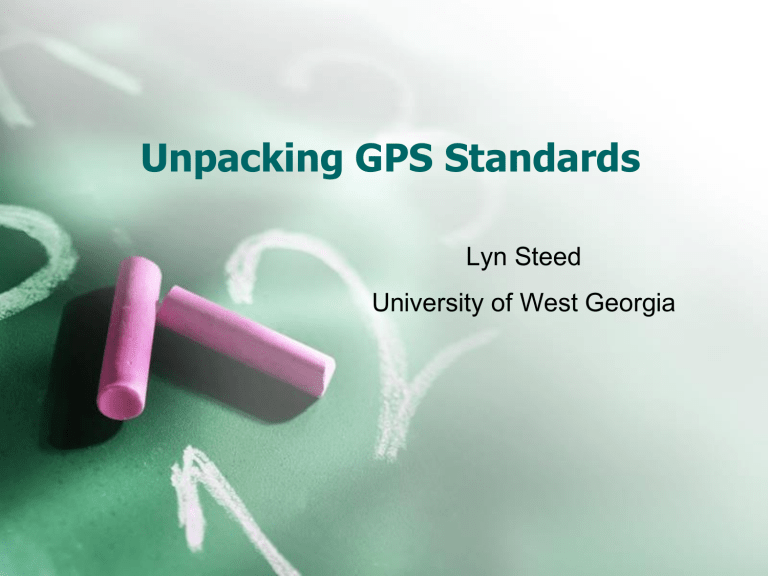
Unpacking GPS Standards
Lyn Steed
University of West Georgia
The Process of Instructional Planning
Traditional Practice
•
Select a topic from the curriculum
•
Design instructional activities
• Design and give an assessment
• Give grade or feedback
•
Move on to new topic
Standards-based Practice
•
Select standards from among those students need to know
•
Design an assessment through which students will have an opportunity to demonstrate those things
•
Decide what learning opportunities students will need to learn those things and plan appropriate instruction to assure that each student has adequate opportunities to learn
•
Use data from assessment to give feedback, reteach or move to next level
Step #1. What do I want my students to know and be able to do?
• Standards and elements
• “Unpack” the standard
Identify “big ideas”
Enduring Understandings/Essential
Questions
Prioritize EUs and EQs
Knowledge and Skills
“Unpacking” a
Standard
• Identify “big ideas”
Significant words and phrases
Transfer to other contexts
Serve as organizers for planning instruction
Are conceptual; abstract
“Unpacking” a Standard
• EUs and EQs
Broad focus
No “right” answer
Designed to provoke and sustain student inquiry, while focusing learning and final performances
Raise other important questions
“Unpacking” a Standard
• Prioritize EUs and EQs
Judgment call
Which aspects we need to teach first
Reflect on previously mentioned
“considerations ”
EU Examples
Students will understand the Civil War.”
Bad: what should they understand?
“Students will understand the causes of the
Civil War.”
Better: narrows the focus but still does not state what insights we want students to leave with.
“Students will understand that the Civil War was fought over states’ rights issues more than over the morality of slavery.”
Best: Summarizes intended insight, helps students and teachers realize what types of learning activities are needed to support the understanding.
“Unpacking” a Standard
• Knowledge and Skills
What you want students to know, be able to do and understand by the end of this unit
Topical – specific to the unit
Overarching – can be used across units
Select a standard
• ELA3R1: The student demonstrates the ability to read orally with speed, accuracy, and expression.
• Find the nouns and verbs: nouns and noun phrases describe the content and concepts in the standards. What do I want my students to learn?
Verbs identify the skills students need to show.
What do I want my students to be able to do?
• ELA3R1: The student demonstrates the ability to read orally with speed, accuracy, and expression.
• Nouns Verbs student demonstrates ability read orally speed accuracy expression
Big Ideas
• What we want students to “get inside of” and retain after they’ve forgotten many of the details.
Big Ideas: demonstrates read orally speed accuracy expression
Enduring Understandings and
Essential Question
EU: What knowledge do we want to be transferable and retained?
The student understands that decoding quickly and accurately will increase fluency and comprehension.
EQ: What question will foster inquiry, understanding, and transfer of learning?
What letter chunks do I see that I can use to sound out this word quickly?
Step #2. How will I know if my students know it and/or can do it?
• Evidence of learning and understanding
• Descriptive feedback about student performance
• Match assessments with objectives
• Variety of assessments
Informal checks for understanding
Observations and dialogues
Tests and quizzes
Academic prompts
Performance tasks
Student self-assessments
What students should know
(key facts, rules, laws, principles formulas, concepts, terminology, definitions, sequence and timeline)
• Letters represent sounds
• Decoding is done by sounding out letter/letter combinations quickly from left to right.
• Quick and accurate decoding increases fluency.
• Fluency increases comprehension
.
What students should be able to do
( skills, procedures, processes)
• Identify sound/sounds made by largest identifiable letter chunk. ( word families, prefixes, suffixes, blends, etc.)
• Blend sounds to read words.
• Decode quickly without prompting.
Assessment Elements
( to be assessed)
• The student applies letter-sound knowledge to decode unknown words quickly and accurately.
Step #3. What will need to be done to help my students learn the required knowledge?
• Instruction
• Informed by assessments
• Identify resources
• Plan unit and sequence of lessons
Sample Performance
Assessments
( formal or informal ways that students demonstrates knowledge and skill of the element)
• The students will read a passage orally while the teacher completes a running record or miscue analysis.
Step #4. What will I do when I have a student who doesn’t know it or can’t do it?
• Differentiation
• Reteach
• Remediate
